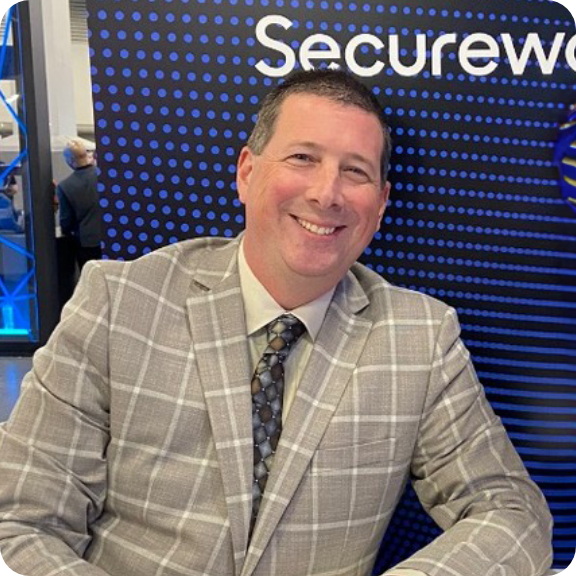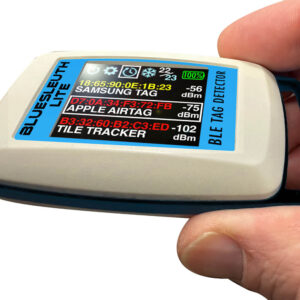Your cart is currently empty!
Contraband Challenge to Wardens

The Contraband Challenges of Wardens in a Smartphone World
Contraband is a threat to our prison wardens. It is a threat that has gone mobile. Wardens have a hard time preventing the entry, and then detecting the contraband that has come into their facility. With the ubiquity and cost of cell phones, it is now a daily threat they now face. In the modern age smartphones are the weapon of choice for inmates. They can use contraband cell phones to organize activities outside of the prison, connect with others in other prisons, and conduct illegal business. This all leads to unpredictable actions and threats on wardens and guards.
Contraband has been around as long as there have been prisoners but contraband cell phones are a relatively new phenomenon. Cell phones started out as bulky devices the size of a brick. Easy to detect. But market forces and new technology have made them smaller and smarter.
Cell phones first started to make their way into prison systems in the 1990s, but the number of contraband phones exploded in the 2000s. Now many correctional systems seize thousands of phones every year. A basic phones offers an inmate unmonitored contact with friends, or associates on the outside.
What Does This Mean For Wardens?
This is the threat. Inmates are using these phones to make contact outside their jail or prison. It has created an eco-system of supply and demand for these contraband cell phones and this has created a hierarchy of problems. Dealers are getting these phones from sources that should not be supplying them.
The FCC is spending millions of dollars to find non “jamming” solutions to reduce the threat of contraband cell phones. The FCC is attempting to stop illegal cell phones from entering prisons.
This has led to a power struggle. Inmates are able to communicate orders, do business, and even threaten others from the comfort of their cell. Contraband has become a paramount issue (See pockethound.com for ways to fight it) for detection. Finding these phones before they get in the hands of inmates is a preventative measure secure facilities now focus on as much as violence and drug use.
[tweetthis]”Smartphones have allowed inmates to access the Internet, social media, & victims. This needs to stop.” http://bit.ly/1QMBsCD @BVSystems[/tweetthis]
What Can Be Done to Control the Contraband?
There are some solutions (including meshDETECT) that allow for monitored, secure phone calls to and from inmates and to their families, friends, or legal counsel. But the vast majority of contraband is used unmonitored and to conduct illegal activities.
In 2014 a routine sweep at a prison in New Mexico uncovered a smart watch.
Watch video below of the news report. Shocking.
Some inmates use contraband phones to talk with their families and avoid charges from the pay phones installed in correctional facilities. Other users are not so benign. They also use contraband phones to pass orders to accomplices inside or outside the prison. Inmates have used cell phones to orchestrate escape attempts, run identity theft and drug rings, intimidate witnesses, run scams, extort money, coordinate riots and protests and take out contract hits on members of the public and other inmates.
Possibly 10% of prisoners have cell phones
The California Department of Corrections and Rehabilitation found 12,151 phones in 2013 alone. A writer for The Atlantic estimated that number represented 10% of the phones in the system, meaning almost all of the state’s 135,600 inmates had a phone. Sources from other prisons estimate higher catch rates, but the number of phones getting into inmates’ hands is far too high.
How Can we Prevent the Contraband Phones from being Used
Think twice before “Jamming”
Can’t prisons just “Jam” cell phone transmissions?
No, it’s illegal.
Jamming causes more problems than it solves. Under current law, the use of technologies that block (or “jam”) mobile calls are illegal in the United States. Cell phone jamming doesn’t just block inmate calls — it can also interfere with mobile 9-1-1 emergency calls and public safety communication.
Plus if “jammers” were legalized for any purpose, the department of Homeland Security would be alarmed. They would be worried that if put in the hands of terrorists, they could “jam” an area after an attack. It’s a very complicated issue. The idea of “jamming signals” as an alternative is not a reality any time in the near future.
Plus a single “jamming” act can generate a $100,000 fine for its perpetrator.
[tweetthis]”Too many resources are used to fight contraband cell phones in prisons. We need to prevent the phones not “Jam” them.” http://bit.ly/1QMBsCD @BVSystems[/tweetthis]
According to the FCC, the unlawful use of a jammer is a criminal offense, and can result in various sanctions, including (ironically), a jail sentence. More specifically, the unlawful marketing, sale or operation of cell phone, GPS, or other signal jammers in the U.S. can result in significant fines.

Up to $16,000 for each violation or each day of a continuing violation, and as high as $112,500 for a single act. So if anyone tries to sell you a jamming device – run!
We cover alternative solutions for preventative detection. Perimeter security options for cell phone detection, and a few tools on how to properly find and confiscate illegal cell phones in cells.

Scott Schober
CEO | Author | Speaker at Berkeley Varitronics Systems
Scott Schober presents at cybersecurity and wireless security conferences for banking, insurance, transportation, construction, telecommunications and law enforcement industries. He has overseen the development of dozens of wireless test, security, safety and cybersecurity products used to enforce a “no cell phone policy” in correctional, law enforcement, and secured government facilities. Scott regularly appears on network news programs including Fox, Bloomberg, Good Morning America, CNN, MSNBC, NPR and many more. He is the author of 'Senior Cyber', 'Cybersecurity is Everybody's Business' and 'Hacked Again', the “original hacker’s dictionary for small business owners” - Forbes Magazine.
Our Newsletter
Lorem ipsum dolor sit amet, consectetur adipiscing elit. Aliquam mattis ligula vitae leo scelerisque, sit amet feugiat ex venenatis.
"*" indicates required fields
Latest Posts
Our Best Sellers
How can we help?
Lorem ipsum dolor sit amet, consectetur adipiscing elit. Nunc dictum aliquet justo sit amet consectetur. In tempor lobortis ante vitae ornare. Praesent feugiat magna at tempor consequat. Aenean in iaculis libero, aliquam imperdiet mi.









Leave a Reply